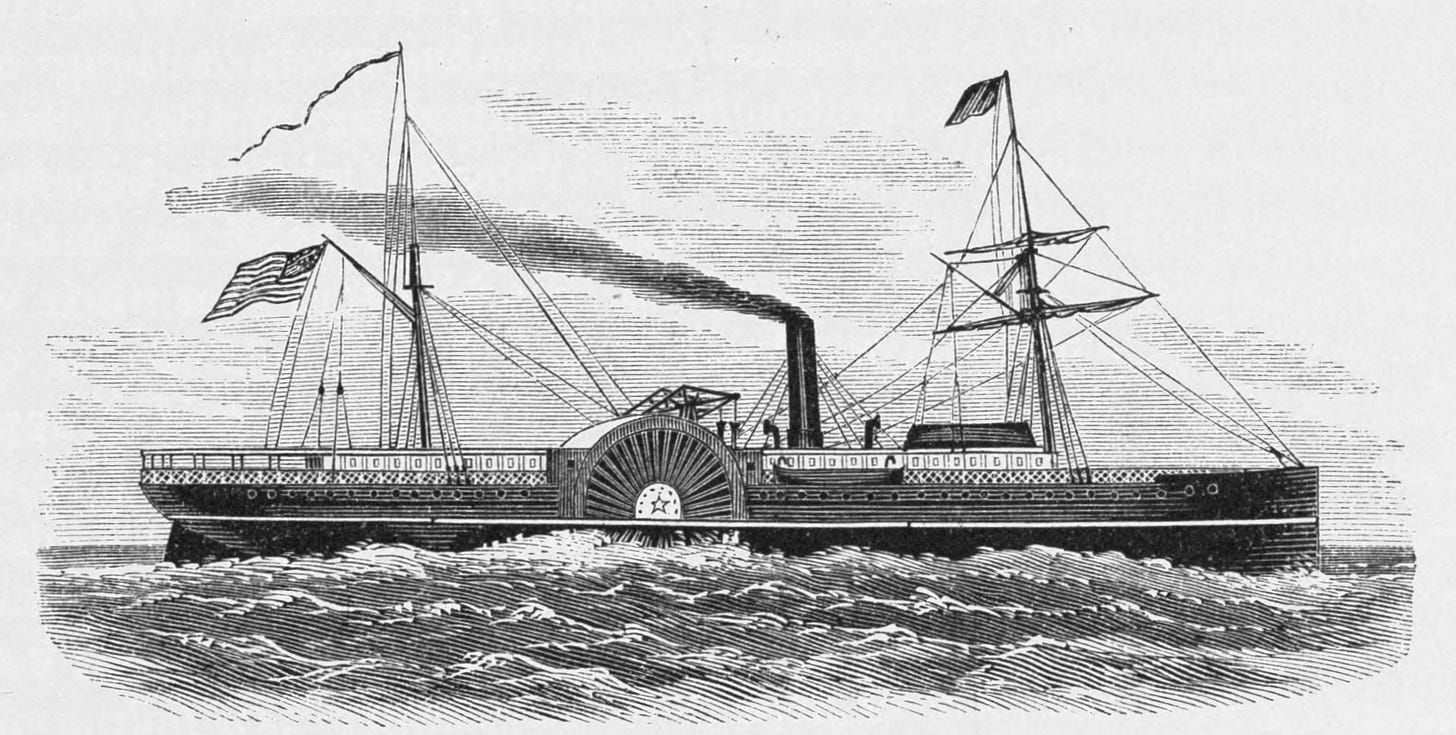Temps Passés: Star of the West and the first shots of the Civil War
The Civil War really began when South Carolina demanded the evacuation of Fort Sumter 163 years ago today.
Most of us were taught that the Civil War began with the attack of South Carolina militia on Fort Sumter, a remote rock at the mouth of Charleston Harbor. That wasn’t quite the case, as the story the Star of the West, its fruitless effort to land supplies, and the South Carolinian response with cannon fire illustrates. Shots were fired 163 years ago today, little more than a week after South Carolina seceded and three months before the historical bombardment of the fort.
South Carolina seceded from the Union in December 1860, the first state to do so, and immediately demanded that the U.S. Army abandon its fort in the harbor. Fort Sumter was a formidable fortress but the Army was at Fort Moultrie, a much smaller and less secure place across the island. Its enterprising commander, Major Robert Anderson, quietly moved his forces to Sumter, which he thought would be easier to defend. That move took place the day after Christmas, 1860.
A week later, on January 9, the union sent a relatively new and unarmed paddlewheel steamer, the Star of the West, to resupply Anderson’s stranded force. On Jan. 9, as it approached, shore batteries fired upon it, hit it three times, and forced it to withdraw before it could deliver the supplies.
Star of the West (Wikipedia)
The fort held out. Lincoln was inaugurated March 4, 1861, and notified the governor of South Carolina that he intended to resupply Fort Sumter. In response, South Carolina bombarded the outgunned fort, forcing Major Anderson to evacuate with the loss of two men. The date of that bombardment, April 12, is commonly cited as the beginning of the Civil War.
Fort Sumter raised war cries on both sides. By February 1, six more states had seceded and Lincoln began a campaign to raise 75,000 volunteers.
Almost exactly four years later, the war ended with Lee’s surrender after the deaths of 700,000 combatants, most due to disease (a number still in dispute). The economy of the south was ruined, with GDP reduced 40-50%. In the north the loss was less, but still approached 20%. (GDP loss in the Great Depression was 30%.)
The northern economy recovered quickly. On the strength of its industrial base, it reached prewar levels in two years. The south, whose economy was based on slavery and agriculture, could not restore its economy to prewar levels until the dawn of the 20th century.
Links
Wikipedia
Google maps - Charleston Harbor and Forts Sumter & Moultrie
Star of the West, a short video:
My novel The Final Heist is on sale in a Kindle Countdown Deal through next Tuesday, Jan. 13. The blurb:
It's now 2019, midway through the phony war between Russia’s first invasion of Ukraine and its full invasion. Notre Dame Cathedral has just burned, leaving all Paris on edge and in mourning. With the blessing of the Kremlin, a former KGB agent plots his own private war. His goal: to extend Russia's conquest westward from Ukraine to the very border of Germany. The threat of war is very real, but his plan will work only if he can recover a king's ransom in gold the Nazis stole in the last big war. It's been hidden for years.
“There are dizzying international secrets to be sought out and untangled.... A great ride to an exciting end !” --K W F, Amazon reviewer
”I love the link to the Second World War and Nazi gold. I can't wait for the next installment!!!” --Cheryl Johnson, Amazon Canada reviewer




